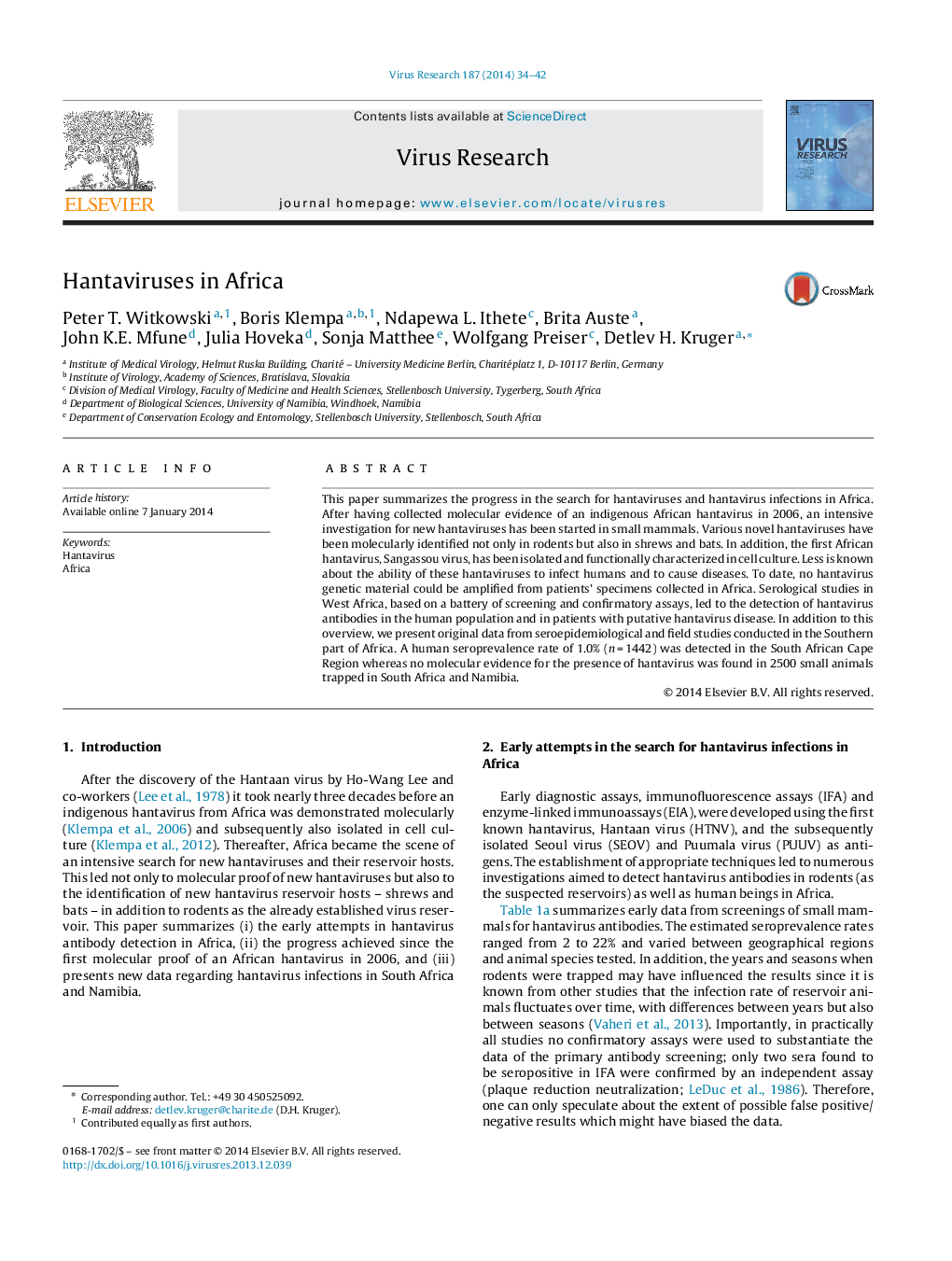| Article ID | Journal | Published Year | Pages | File Type |
|---|---|---|---|---|
| 6142535 | Virus Research | 2014 | 9 Pages |
â¢First, a detailed overview on the early attempts to serologically detect hantavirus infections in Africa is presented.â¢Since 2006, genetic material of various novel hantaviruses from Africa has been molecularly identified not only in rodents but also shrews and bats.â¢Only Sangassou virus from Guinea has been isolated and functionally characterized in cell culture yet.â¢Serological studies in West Africa, based on a battery of screening and confirmatory assays, led to the detection of hantavirus antibodies in the human population and in patients with putative hantavirus disease.â¢In a current investigation, a human seroprevalence rate of 1.0% (n = 1442) was detected in the South African Cape Region.
This paper summarizes the progress in the search for hantaviruses and hantavirus infections in Africa. After having collected molecular evidence of an indigenous African hantavirus in 2006, an intensive investigation for new hantaviruses has been started in small mammals. Various novel hantaviruses have been molecularly identified not only in rodents but also in shrews and bats. In addition, the first African hantavirus, Sangassou virus, has been isolated and functionally characterized in cell culture. Less is known about the ability of these hantaviruses to infect humans and to cause diseases. To date, no hantavirus genetic material could be amplified from patients' specimens collected in Africa. Serological studies in West Africa, based on a battery of screening and confirmatory assays, led to the detection of hantavirus antibodies in the human population and in patients with putative hantavirus disease. In addition to this overview, we present original data from seroepidemiological and field studies conducted in the Southern part of Africa. A human seroprevalence rate of 1.0% (n = 1442) was detected in the South African Cape Region whereas no molecular evidence for the presence of hantavirus was found in 2500 small animals trapped in South Africa and Namibia.
